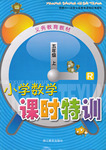题目内容
In a natural disaster—a hurricane, flood, volcanic eruption, or other catastrophes—minutes and even seconds of warning can make the difference between life and death.Because of this, scientists are working to use the latest technological advances to predict when and where disasters will happen.They are also studying how best to analyze and communicate this information once it is obtained.
On September 29, 1998, Hurricane Georges made landfall in Biloxi, Mississippi, after damaging Haiti, the Dominican Republic, Puerto Rico, and several islands of the Caribbean badly with torrential rains and winds up to 160 km per hour.Few people lost their lives along the Gulf Coast of the United States, although hundreds died in the Caribbean.
This was a very different outcome from 1900, when a powerful Gulf Coast hurricane made an unexpected direct hit on Galveston, Texas, killing at least 6,000 people.
Vastly improved hurricane warnings explain the different circumstances at either end of the 20th century——residents of Galveston had no advance warning that a storm was approaching, while residents of Biloxi had been warned days in advance, allowing for extensive safety precautions(预防).
At the same time that people in Biloxi were thankful for the advance warning, some residents of New Orleans, Louisiana were less satisfied.A day before Georges made landfall, forecasters were predicting that the hurricane had a good chance of striking New Orleans.Because much of New Orleans lies below sea level, the city is at risk for flooding.Emergency management officials must begin evacuations(疏散)well before a storm strikes.But evacuation costs money: businesses close, tourists leave, and citizens take precautionary measures.The mayor of New Orleans estimated that his city' s preparations for Georges cost more than 50 million.After Georges missed New Orleans, some residents questioned the value of the hurricane forecasts in the face of such high costs.
The different views on the early warnings for Hurricane Georges show some of the complexities related to predicting disasters.Disaster prediction is a process of providing scientific information to the government officials and other decision makers who must respond to those predictions.
【小题1】What is the purpose of disaster prediction according to the passage?
| A.To identify the cause of disasters. |
| B.To save people' s lives and property. |
| C.To prevent natural disasters from happening, |
| D.To apply advanced technology to disaster prediction. |
| A.Puerto Rico. | B.New Orleans. |
| C.Biloxi, Mississippi. | D.Galveston, Texas. |
| A.the forecast hurricane did not hit the city |
| B.the hurricane warning arrived rather late |
| C.their preparations were made in vain |
| D.they suffered from a heavy hurricane attack |
| A.The different ways of disaster prediction. |
| B.Technological advances in disaster prediction. |
| C.The importance and uncertainty of disaster prediction. |
| D.The benefits and preparations of disaster prediction. |
【小题1】B
【小题1】D
【小题1】C
【小题1】C
解析

 小学课时特训系列答案
小学课时特训系列答案Vans, Keds, Dollies—they sound like the names of rock bands, but if you have teenagers, you'll know they're actually the latest in teenage footwear.
But experts are now warning that the current shoe fashions will be causing teenagers discomfort in the short term and storing up years of foot, knee and back pain in the future.
Here, the experts identify the problems caused by teenagers' shoe choice.  KEDS/VANS
KEDS/VANS
Slip-on shoes with elastic (弹性的)sides are particularly popular among teenage boys - with Keds and Vans the most sought-after brands.
The main problem is that they are just too flat—so flat that the heel, which strikes the ground first, also becomes damaged and painful.
BALLET PUMPS The worst shoes of all are such light and thin dolly shoes. The problem is partly their flatness, as with Keds and Vans. However ballet pumps, which have no string or heel, have other specific problems.
The worst shoes of all are such light and thin dolly shoes. The problem is partly their flatness, as with Keds and Vans. However ballet pumps, which have no string or heel, have other specific problems.
“As the shoe has no fastening device, it relies on the toes to keep the shoe on, causing an awkward gait(步法), this leads to short- and long-term problems such as calluses(茧子), heel and knee pain.”
WEDGES AND STILETTOS These shoes can also cause problems with gait. They may look good, but the heels on these are so high they can force the wearer's body weight forward, making them very unstable.
These shoes can also cause problems with gait. They may look good, but the heels on these are so high they can force the wearer's body weight forward, making them very unstable.
Teens who wear these shoes regularly are also in danger of joining those millions of women with constant back pain.
SCHOOL SHOES
So what do podiatrists(足科医生)have on their wish list, especially for everyday wear?
Something in a natural, breathable fabric, with a string to hold it on, with a small heel and a deep toe-box that does not press the toes, such as Clark's, Marks & Spencer or Rhino.
If your teen insists on wearing 'bad' shoes, get them some simple foot orthotics(矫形器) in the shoes. These support and correct the movement of the foot and, properly fitted by a podiatrist, can often transform their walk and halt the damage.
【小题1】 Of all the shoes mentioned in the passage, which can cause the worst problems?
A.Marks & Spencer . . | B.Wedges & Stilettos. |
| C.Keds and Vans. | D.Ballet Pumps. |

【小题3】 The underlined word “halt” in the last paragraph probably means _______.
| A.increase | B.worsen | C.stop | D.cure |
| A.trendy shoes may ruin teenagers’ health |
| B.fashionable shoes all have orthotics in them |
| C.experts are strongly against wearing popular shoes |
| D.podiatrists are expert at producing branded shoes |
| A.Sports. | B.Science. | C.Health. | D.Shopping. |